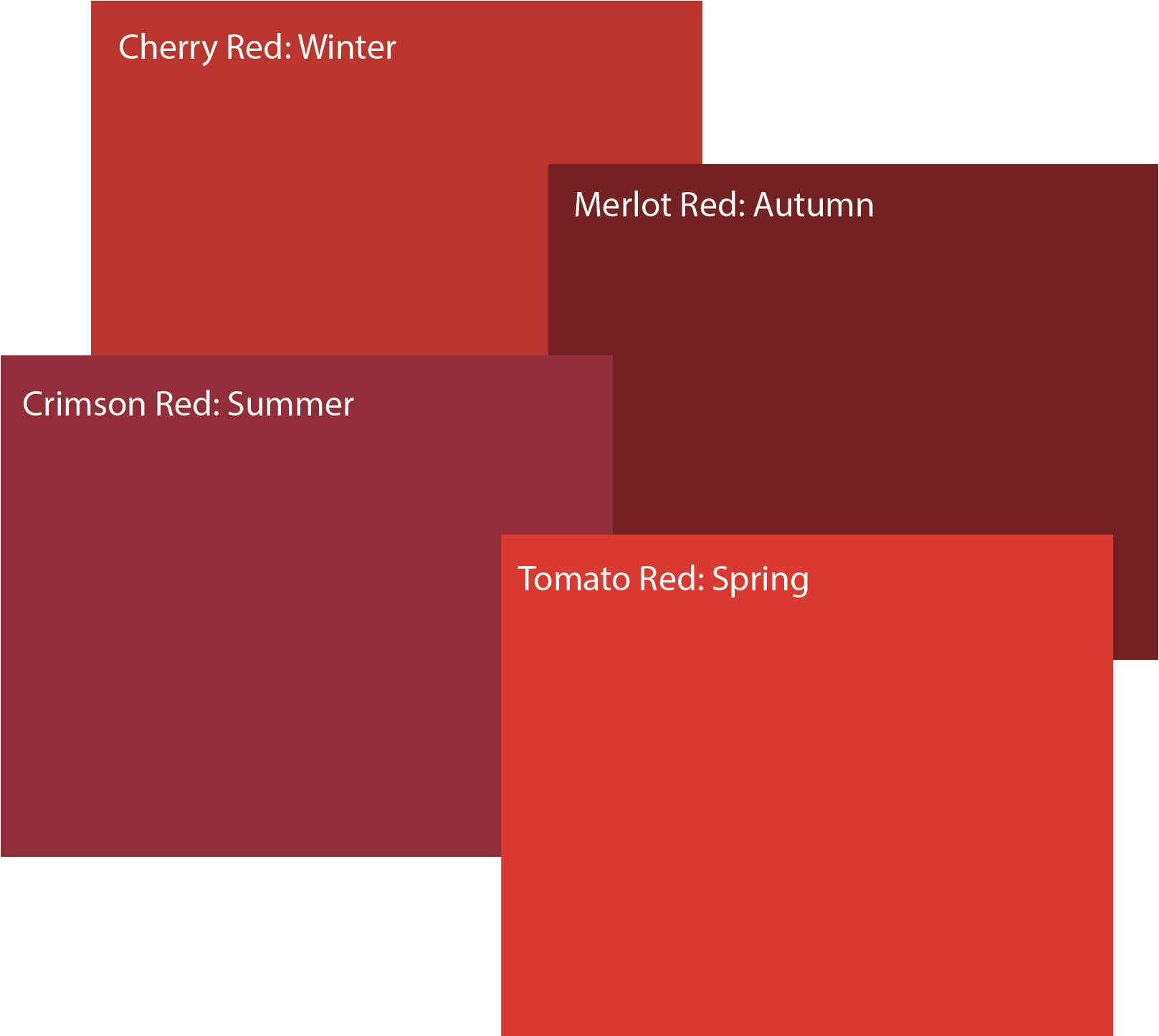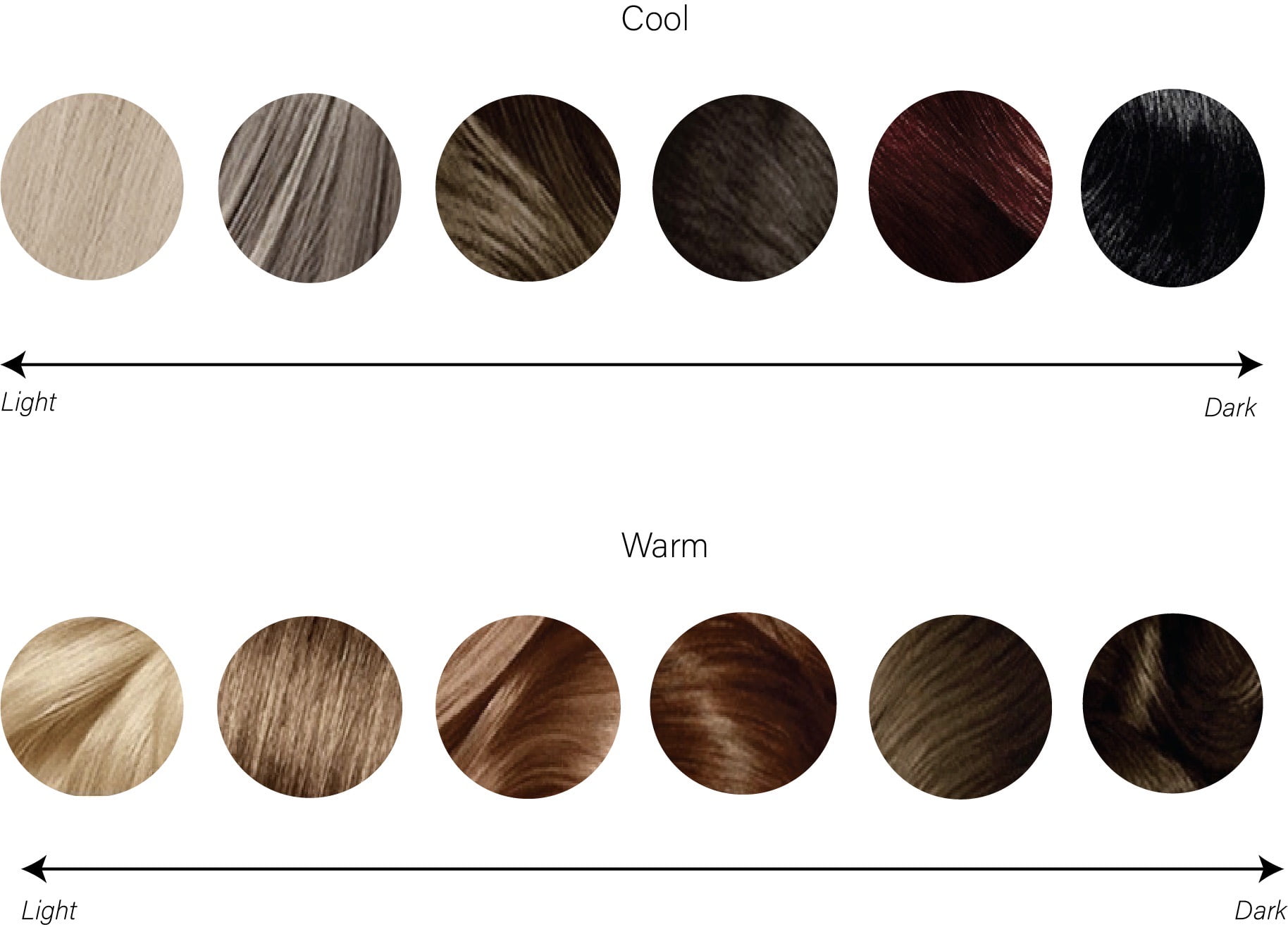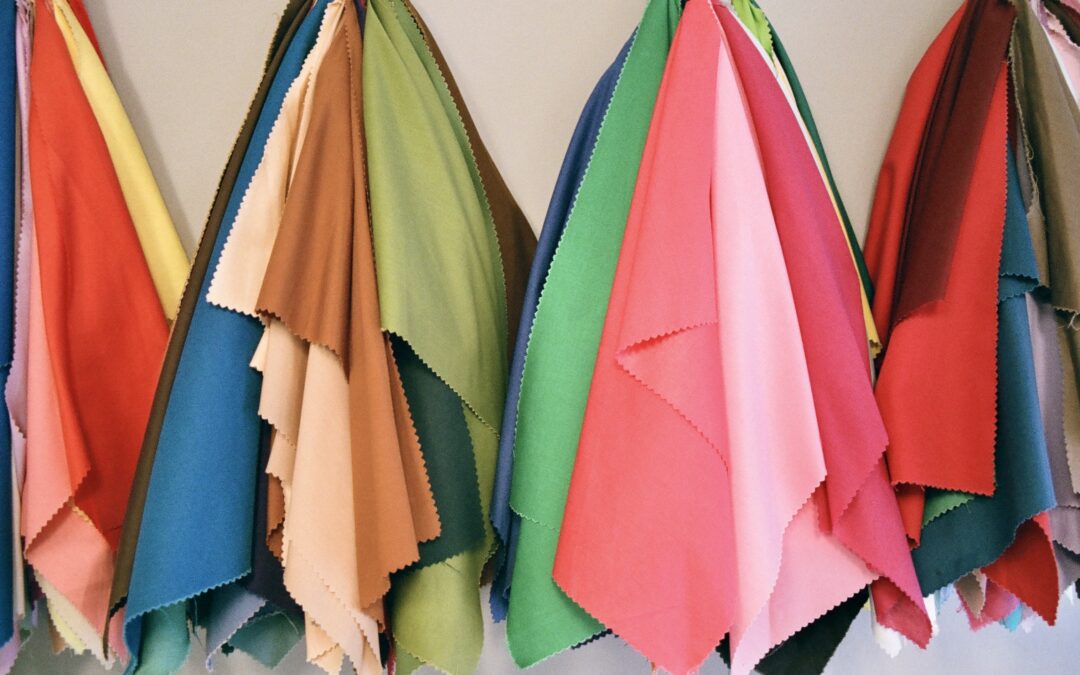
Have you ever looked in the mirror after putting the finishing touches of an outfit together and thought “Doesn’t this colour look absolutely amazing on me”? If yes, would it not be even better to know all the types of colour that give you this feeling? If no, would it not beneficial to know how to achieve this feeling?
Whether or not you have felt it, there are specific colour palettes that complement you the best based on colour theory. Colour theory works with ones natural colouring to create Seasonal Colour Analysis.
Points of Focus
Colours aspects and their meaning
- How these aspects Interact
- Applying these aspects to the analysis
- A general discovery of which of the four seasons you fall into
Introduction to Colour Palettes
Upon discovering your season, there will be a palette featuring shades from different colours that are most harmonious with your skin tone. Although the name of this analysis uses colour, it is really about determining the shade of each colour.
Your season does not eliminate you from wearing certain colours, instead it encourages you to wear the colours you love while choosing the right shade. These colours may come in the form of clothes, make up, or any other addition of colour.
In our previous guides to colour analysis we first introduced you to the four season colour analysis to build a foundation of colour theory. If you are unfamiliar, you may find them here.
Now that your foundation has been built, we are moving into understanding 12 season colour analysis. This provides a fuller and more accurate analysis because it explores 3 colour aspects instead of just 2.
An individual may be a certain season, but taking into account the additional aspect it may be discovered that they have influences of a neighbouring season that affords them a different colour palette.
The goal of Seasonal Colour Analysis is to discover which out of the 12 colour palettes complements your natural colouring the best.
In the above example you can see the different seasons and which type of natural colouring falls into them. For each main season; summer, autumn, winter, and spring there are 2 subcategories.
The Three Colour Aspects
Each analysis is based on three colour aspects; temperature, value, and chroma. Temperature is on a spectrum of cool to warm, value; light to dark/deep, and chroma; soft/muted to clear/bright.
1. Temperature
Determines how warm or cool a given colour is. A greater presence of yellow makes a colour warmer while, a greater presence of blue makes a colour cooler. Red is the neutralizer and rests in the middle of this spectrum.

2. Value/Contrast
How light or dark a colour is. If there is more black added to a colour then it becomes darker, while if white is added, it becomes lighter. The value/contrast is applied to the overall colouring of your three features; Skin, hair, and eyes.
Low contrast means that there is little differentiation between features in terms of darkness and lightness; all features are dark or all features are light.
High contrast would be the opposite and mean that there is a stark difference in the darkness and lightness of skin and hair, while medium contrast falls in the middle.

High contrast is when skin is much lighter in comparison to ones hair and eyes, as we can see in the example above. Michelle’s contrast shows that one does not need to have lighter skin in order to be high contrast, but rather their skin needs to be light in relation to their hair and eyes.

3. Chroma
Bright colours without the presence of grey are considered pure colours that are vibrant and fully saturated. Once grey is added to these colours they become more soft/muted.
Just as our natural colouring has these aspects, so do colours. These aspects are what create the different shades we see in colours.
For example the colour red may be worn by every season, but only certain shades will complement them the best. Each shade of red presented to the left contains the characteristics and aspects for it’s season.
For winter, autumn, summer, or spring these are the shades that accentuate the natural colouring the most based on the colour’s temperature, value, and chroma.
We can see that summer has the most presence of grey, while spring is the clearest and most vibrant.
Applying the Three Colour Aspects
There are three physical features that are used for colour analysis which are skin tone, hair, and eye colour. As your skin has the greatest surface area and maintains a relatively consistent colour throughout your lifetime, it is the most accurate to use for analysis. Skin tone is made up of both an undertone and overtone.
Undertone is the underlying colour that works together with your overtone which is your external colouring. Your undertone is constant throughout your life.
It resides within your skin tone and is not affected by the gradual changes that our overtone goes through in different seasons.
Hair colour and eye colour can both be changed and so when doing your analysis it is important to always consider your natural colouring.
The role of hair and eye colour in this analysis is to give more signs as to what your undertone is. All features work together to give a complete picture of ones colouring.
Undertone may be difficult to identify because we are so accustomed to our overtone. The temperature of your undertone may be warm, neutral, or cool despite whether or not you have a lighter or darker overtone.
The presence of your undertone will show through how much yellow, red, or blue is in your overtone. Warm skin tones will look more yellow, neutral ones more pinkish, and cool ones more blue. Here are some tests to help you identify your undertone.
Metal Test
Silver and gold are used in this test as each represent the cool or warm aspect found in our undertones. Gold and yellow complement one another meaning that gold will draw out the natural warm colouring found and make you appear glowing and radiant.
Silver will do the same for cool undertones as it highlights the blue. Therefore, if you look better in gold than in silver then you have a warm undertone and vice versa.
If you feel both metals complement you equally well then you have a neutral undertone.

At first glance which metal do you feel gives Beyoncé an undeniable radiant glow? If you thought gold you are correct. As an autumn, Beyoncé has a very warm undertone and we can see the gold in her outfit accentuates that.
It’s interesting to note that the stage decoration uses colour theory to complement both looks as well. Where she is dressed in gold, they use yellow lighting and smoke, whereas when she as dressed in silver they use a blue background and smoke.
Hair Colour
Hair that is ashy has cool undertones, while hair that has golden hues is warm. Golden hues may be present in darker hair as well. Red hair that appears as dark auburn or has blueish hues that shows hints of purple have cool undertones.
Warm undertones have bright and orangey red hair colour. In the example below you can see how the two temperatures differ in hair colour appearance.

Discovering Your Primary Colour Aspects
Your primary colour aspects will be the most noticeable aspect of your appearance based on the 3 dimensions; temperature, value, and chroma. Once you have discovered your primary aspect you can work with this to figure out your secondary aspect.
Warm
If the first thing that you notice about your look is a warm and radiant glow, then your primary aspect would be your temperature. Using the tests above will better help you determine what temperature you are.
Because warmth is the primary colour the metal test will be very clear in where each metal will greatly enhance or avert your colouring. Each aspect is on a scale, so your primary aspect would be the closest to the extreme and the secondary aspect would be the next most extreme.

A warm primary aspect has a neutral contrast where no feature is overly dark or light in relation to one another. This means the secondary colour aspect would have to be the chroma. These primary and secondary aspects leave you with the option of being either a true spring or a true autumn.
True autumns have a muted/soft chroma while, true springs have a bright/clear one. You will be able to determine this by observing how soft versus bright colours interact with your natural colouring.

In the above example you can see that both are very warm in undertone, but differ in how their features contrast. Celine’s features blend together more because of their similar colour meaning they are low contrast, while Jessica’s are more constrasted.
Celine is wearing an emerald green that is soft and deep whereas Jessica is wearing a bright red similar to the tomato red we saw in the shades of red example. Because her chroma is bright, vibrant and warm colours look best on her.
Cool
A cool primary aspect emanates a strong lack of warmth where your skin has significant blue or grey undertones. Often times these will be accompanied with clear blue veins. Due to your skin’s coolness, your contrast will be medium to high in relation to your hair and eyes.

Temperature can always be paired with chroma as a secondary aspect which in this case would lead to the option of being either a true winter or a true summer. These two colour seasons have the coolest temperature out of all seasons. Their difference lies in their chroma.
True winters have a bright chroma that reflects the icy starkness of snow in the winter, while true summers have a soft chroma reflective of its sweet haze.
Here we can see how both women are undeniably cool in appearance while maintaining a medium to high contrast. Michaëlle has many grey elements in her colouring that makes her a summer rather than a winter. Sandra’s colouring is clear which allows her to shine in cool and bright colours like the lipstick she is wearing.
Conclusion
It is important to know that these are only four out of the twelve seasons on the colour wheel, so while you might have been able to identify a cool or warm temperature, but have a high contrast rather than a medium one.
There are 4 other characteristics to discover and all these will be available in our next guide, for now you are one step closer to discovering your seasonal colour analysis.
If you want to skip the reading and receive a full Seasonal Colour Analysis from one of our expert colour stylists, click here to book your appointment.
Want to learn more about how you can discover your unique style and create the highest quality custom tailored wardrobe? Click here to receive a complimentary 30 minute wardrobe consultation with one of our expert stylists.

